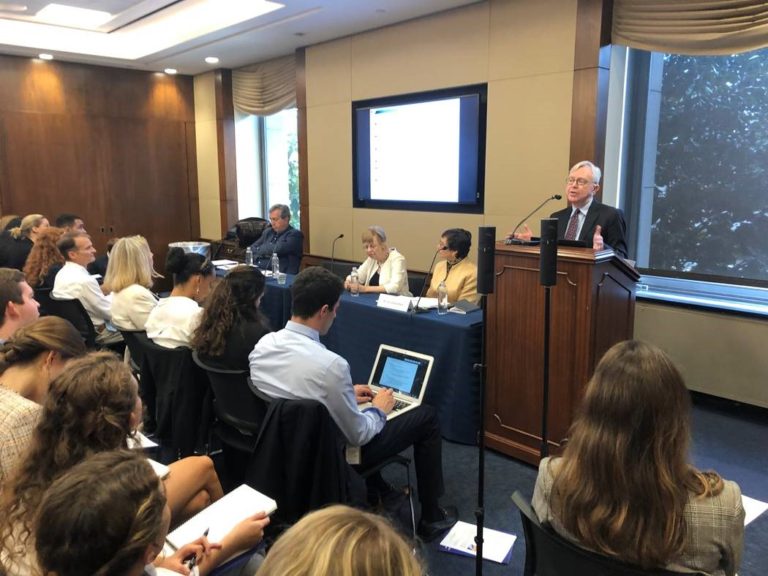 On July 23, over one hundred congressional staffers took a break from the summer heat to attend PAA's Capital Hill briefing, and ice cream social, "Drawing a Line: How We Measured Poverty and Why it Matters." The briefing featured presentations regarding the practical and policy implications of alerting the current poverty measures and recommendations for reducing U.S. child poverty by 50 percent within ten years.
On July 23, over one hundred congressional staffers took a break from the summer heat to attend PAA's Capital Hill briefing, and ice cream social, "Drawing a Line: How We Measured Poverty and Why it Matters." The briefing featured presentations regarding the practical and policy implications of alerting the current poverty measures and recommendations for reducing U.S. child poverty by 50 percent within ten years.
Dr. Erica Goshen former commissioner of the Bureau of Labor statistics moderated the panel, which included former PAA President Dr. Robert Moffitt, Johns Hopkins University; Dr. Connie Citro, National Academy of Sciences (NAS); and, Dr. Tim Smeeding, University of Wisconsin-Madison.
Dr. Moffitt set the stage by defining the Official Poverty Measure (OPM) and Supplemental Poverty Measure (SPM). He provided examples of how the OPM is used to allocate funds to the states and to determine eligibility for welfare programs, such as SNAP and Head Start. Dr.Moffitt addressed problems that the OPM poses and why the SPM us a "superior" measure.
Dr. Moffitt set the stage by defining the Official Poverty Measure (OPM) and Supplemental Poverty Measure (SPM). He provided examples of how the OPM is used to allocate funds to the states and to determine eligibility for welfare programs, such as SNAP and Head Start. Dr. Moffitt addressed problems that the OPM poses and why the SPM is a “superior” measure.
 Dr. Citro addressed a recent announcement that the Office of Management and Budget issued, requesting comments on the ramifications of using different inflation measures to adjust the OPM thresholds. She explained how switching to a price index that measures lower inflation would lead to lower poverty thresholds and affect eligibility standards for social welfare programs. She suggested the SPM should be reevaluated every ten years. Further, she argued that a “full review” is necessary before any changes are made to the OPM.
Dr. Citro addressed a recent announcement that the Office of Management and Budget issued, requesting comments on the ramifications of using different inflation measures to adjust the OPM thresholds. She explained how switching to a price index that measures lower inflation would lead to lower poverty thresholds and affect eligibility standards for social welfare programs. She suggested the SPM should be reevaluated every ten years. Further, she argued that a “full review” is necessary before any changes are made to the OPM.
Focusing on an important facet of current poverty in the United States, and a practical application of the SPM, Dr. Smeeding summarized recommendations from a recent NAS report, “A Roadmap to Reducing Child Poverty.” Dr. Smeeding was a member of the committee that drafted the report, which explored the causal impacts of poverty on child and adult well-being; analyzed the progress of major assistance programs; and, issued recommendations for reducing child poverty in the United States within ten years. His presentation focused on the report’s recommendations, which concluded bundling work-oriented and income support programs achieved the greatest reductions in child poverty.
During the question and answer period, individuals asked a wide range of questions, including inquiries about how to help those individuals just above the poverty line and how to reduce the stigma associated with poverty and income assistance programs.
View the recording of the briefing.
See the slides (PDF).
Speakers:
- Dr. Constance Citro, National Academy of Sciences, Committee on National Statistics
- Dr. Robert Moffitt, Johns Hopkins University
- Dr. Timothy Smeeding, University of Wisconsin
- Dr. Erica Groshen, moderator, former Commissioner, Bureau of Labor Statistics
See full PDF flier.
#latest-news#capitol-hill-activities#congressional-briefings